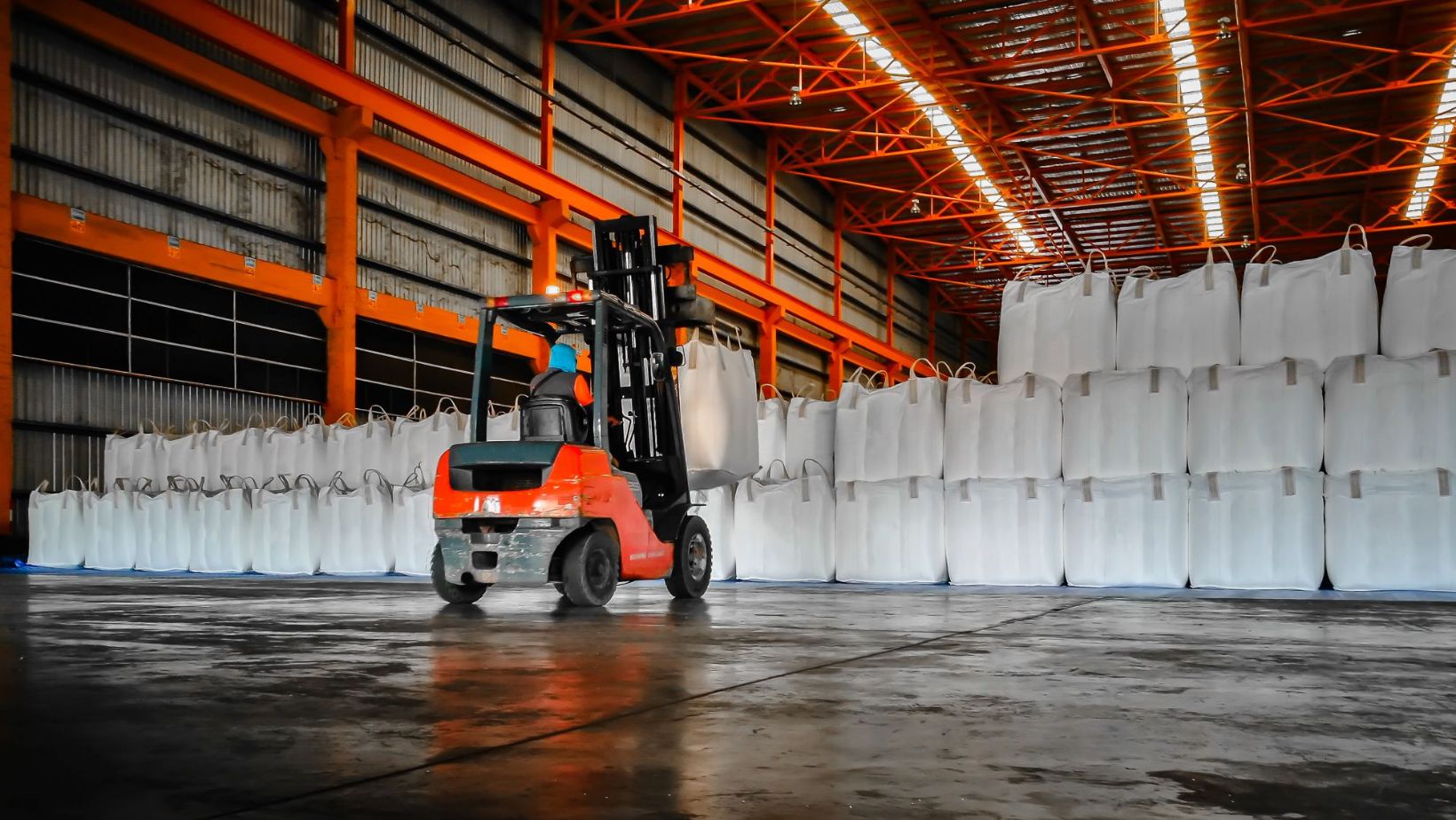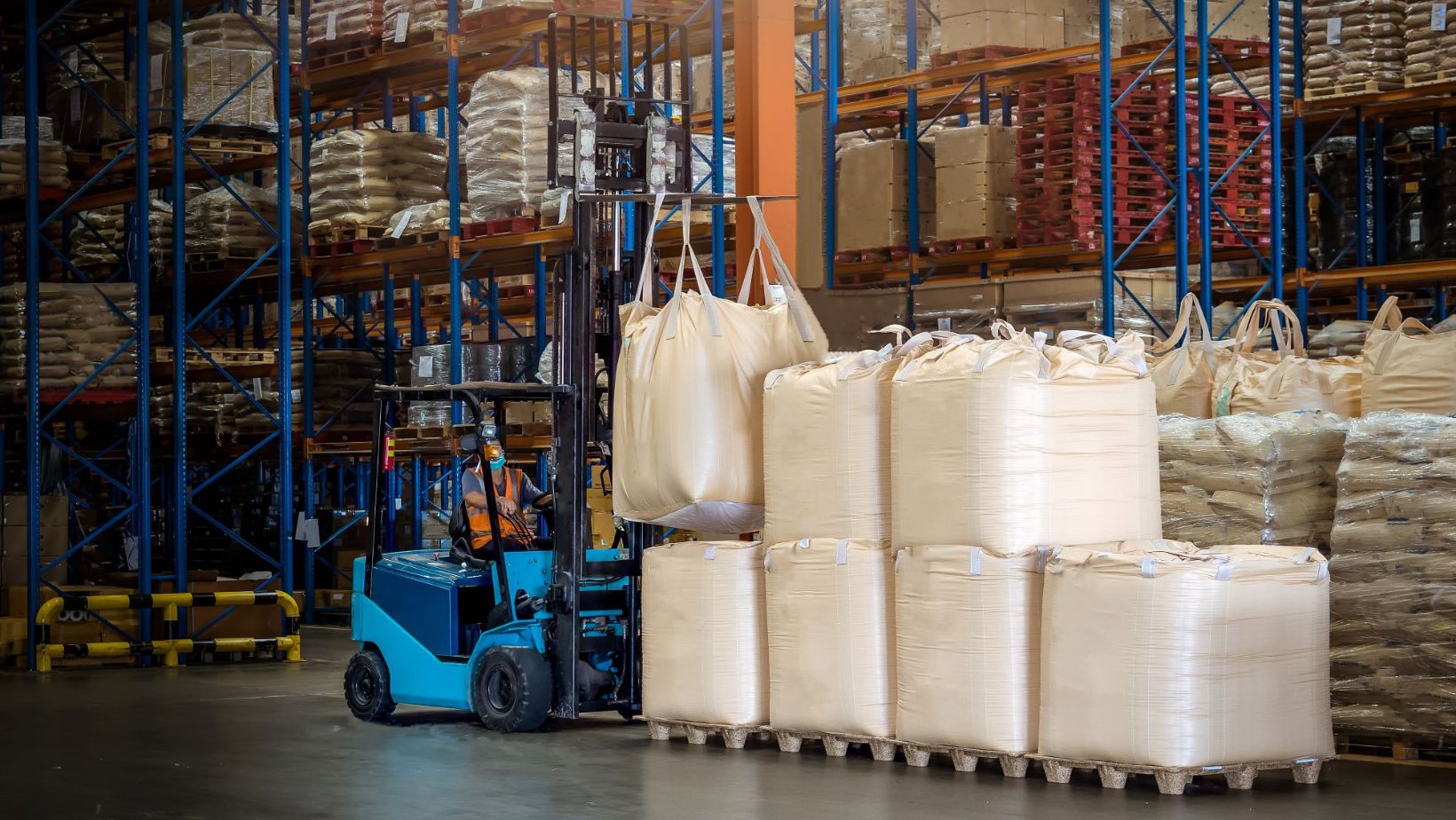Safety First: Practices for Handling and Storing Bulk Bags

Bulk bags, otherwise known as Flexible Intermediate Bulk Containers (FIBCs), big bags, or super sacks, have become an integral part of the industrial and manufacturing sector. With their versatility and ease of use, these formidable storage and transport containers, made of flexible fabric, provide a practical solution for handling dry, flowable products, such as sand, granules, or even certain types of food. However, their usage also brings an element of risk if they are not handled or stored correctly.
This article will delve into the best practices for handling and storing bulk bags, emphasizing the primary rule in any industrial setting.
Proper Handling
One of the most crucial points to remember when dealing with bulk bags is ensuring that they are handled appropriately. Given their potential to hold substantial weights, attempting to move these bags manually can lead to injuries and accidents. It is, therefore, imperative to use proper lifting equipment, such as man lifts, forklifts or cranes, when maneuvering these bags. The bags are often equipped with loops specifically designed for lifting.
Dragging or pulling the bags across abrasive surfaces or sharp corners can result in damages to the bag’s fabric. This not only reduces the bag’s lifespan but also poses a risk of the contents spilling out, leading to possible product loss and, more importantly, workplace accidents.
Inspect Before Use
When considering buying bulk bags for sale, it’s important to recognize the importance of thorough inspections. As is the case with most equipment used in industrial settings, bulk bags should always be inspected before use. An effective inspection process involves checking the bag for visible signs of damage, wear and tear, or contamination.
Damage to a bulk bag can range from a small tear in the fabric to a faulty seam or a compromised lift loop. Even minor damage can reduce the bag’s structural integrity, resulting in spillage or total failure, potentially leading to a dangerous situation.
Similarly, contamination could render the contents of the bag unfit for use. Especially in industries where bulk bags are utilized to store food-grade or pharmaceutical products, a contaminated bag could lead to serious implications, including product recalls and potential harm to end consumers.
Load Evenly
Loading bulk bags evenly is an integral part of safe and efficient use. Uneven distribution of load can cause the bag to become unbalanced, which can pose serious safety risks during transportation or even when the bag is stationary.

Each bulk bag comes with a specified maximum weight limit from the manufacturer. Adhering to this limit is of utmost importance. Overfilling a bag might not only lead to spillage but also put undue stress on the bag’s fabric and seams, increasing the risk of total failure.
Stack Correctly
Stacking bulk bags correctly is just as crucial as loading them properly. Incorrectly stacked bags can become unstable and pose a significant risk of toppling over, potentially causing serious injuries and property damage.
Stacking should be carried out in a way that aligns the bags correctly, creating a stable structure that is unlikely to shift or collapse. However, even with correct stacking, avoid stacking bags too high, as this could make them less stable and more difficult to handle safely.
Avoid Sharp Objects
Despite their robust appearance, bulk bags can easily be damaged by sharp objects. These could be anything from a protruding nail on a pallet to a sharp corner of a machine in the vicinity. Hence, ensuring that bulk bags are kept away from sharp objects is key to their longevity and safe use.
When using pallets to store or move bulk bags, ensure that the pallets are in good condition and free from protruding nails or splinters that could damage the bag. Furthermore, the area where the bags are moved or stored should be free of sharp objects or abrasive surfaces that could potentially damage the bags.
Storage Conditions
Storage conditions play a crucial role in maintaining the integrity of bulk bags and the quality of their contents. They should ideally be stored in a clean, dry environment to prevent contamination or degradation of the bag’s material.
It is also essential to protect bulk bags from extreme weather conditions. Prolonged exposure to sunlight can degrade the fabric of the bag, reducing its strength and lifespan. Similarly, exposure to rain or snow can lead to the bag and its contents becoming wet, which could compromise the quality of the product and make handling the bag more difficult and dangerous.
Recycling and Disposal
Bulk bags, like any other industrial equipment, have a lifespan. After multiple uses, these bags may become unfit for use and need to be disposed of. However, disposal should be done responsibly, considering the environmental impact. Many bulk bags are made of recyclable materials, and recycling programs are available in many areas.

When a bag is empty, it should be folded and stored neatly for reuse or recycling. If a bag is no longer usable, it should be disposed of responsibly. Depending on the material from which it is made, recycling may be an option.
Proper Training
Perhaps the most important point of all, proper training is essential when dealing with bulk bags. Anyone who is expected to handle these bags should be adequately trained. This includes understanding the maximum load limit of the bags, correct lifting techniques, how to inspect the bags for damage, and understanding how to respond in case of an emergency.
Use of Suitable Accessories
When using accessories like filling chutes, discharge spouts, or lifting devices with bulk bags, it’s crucial they’re fit for the specific bag and task. They should be robust, well-designed, and regularly inspected for any damage. A faulty accessory can cause significant risks, such as uncontrolled discharge of the product.
Adhering to Local Rules and Regulations
Finally, all handling and storing practices must comply with local rules and regulations, which can vary from region to region. These rules are designed for worker safety, environmental protection, and product quality. Non-compliance can lead to penalties and safety risks. Regular training, audits, and inspections can ensure these regulations are being followed.
The Takeaway
While bulk bags are an efficient and cost-effective solution for storing and transporting a wide variety of products, they need to be handled with care. The practices highlighted in this article aim to ensure the safe and efficient use of these bags while minimizing the potential risks associated with their use. As always, these guidelines should be supplemented with the manufacturer’s instructions and local safety regulations.
-
Personal Finance5 months ago
How Do I Find My UCAS ID Number?
-
Success5 years ago
Consistency: The Key Ingredient to Success
-
Uncategorized5 months ago
What Does Conditionally Approved Mean For An Apartment?
-
Motivation2 years ago
How To Become a More Organized Person?
-
Others4 years ago
Work Health and Safety: 8 Reasons to Maintain a Clutter-free Office
-
Entrepreneurs3 years ago
Why Diversity is Key in Business Marketing
-
HK Pools5 months ago
The HK Pools Forum Comunity Jos Markotop 2D Warna Kuning – A Great Way to Stay Connected
-
Sport1 year ago
What Makes Soccer Betting So Great?



























